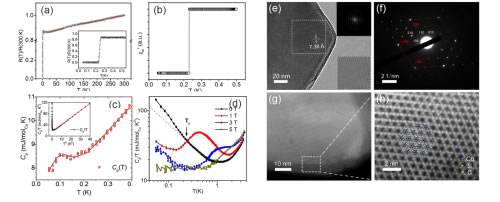In 1964, the American scientist Little Theory predicted that organic compounds had superconductivity and that the superconducting transition temperature could reach room temperature, which inspired researchers' passion for organic superconductors. The first organic superconductor (TMTSF) 2PF6 was discovered in the 1980s. Since its development, organic superconductors mainly fall into three categories: (TMTSF)2PF6 organic charge transfer salts, superconductors based on carbon materials, superconductors of organic acenes . Due to the low dimensionality, strong electron-electron interaction and electron-phonon interaction of organic superconductors, novel physical phenomena such as three-dimensional quantum effects and spin-liquid behavior can be observed in organic superconductors. In order to pursue superconducting materials with higher superconducting transition temperatures, the search for new organic superconductor material systems remains an important target for superconductor research.
Recently, researchers from the Key Laboratory of Organic Solids Research, Institute of Chemistry, Chinese Academy of Sciences, and researchers from the State Key Laboratory of Superconductivity of the Institute of Physics of the Chinese Academy of Sciences have found that the resistance of a Cu-BHT film with the structure shown in Figure 1 drops to 0 at 0.25K. Entering the superconducting state, the observed diamagnetic transition in the ac susceptibility test and the observed phase transition in the specific heat test confirm that Cu-BHT is a superconductor with a transition temperature of 0.25K. At the same time, the direct observation of the atomic image of Cu-BHT by STEM confirmed its perfect Kagome structure. This Kagome lattice may lead to spin-fluctuation behavior of Cu-BHT at low temperatures. Although the superconducting transition temperature is lower, Cu-BHT is the first metal-organic coordination polymer superconductor, which has expanded the material system of organic superconductors, providing new possibilities for the study of organic superconductors; and in Cu- The low-temperature spin perturbations observed in BHT also indicate that there may be more novel quantum condensation states in Cu-BHT.
Related research results were published on Angew. Chem. Int. Ed. The study was funded by the National Natural Science Foundation of China, the Ministry of Science and Technology, and the Chinese Academy of Sciences.

Figure 1. Cu-BHT structure

Figure 2. Superconductivity and TEM, STEM characterization of Cu-BHT. a, The resistance of Cu-BHT thin film dropped to 0 at 0.25 K; b, the diamagnetic transition observed in the ac susceptibility test; c, the phase transition observed in the specific heat test; d, Kagome lattice may cause Cu - Spin-fluctuating behavior of BHT at low temperatures; gh, direct observation of an atomic image of Cu-BHT by STEM
Round Sliding Rail,Heavy Duty Round Rail,Stainless Steel Round Rail,Round Rail Connector
Moon Shower Sanitaryware Co.,Ltd , https://www.moonshowerglobal.com